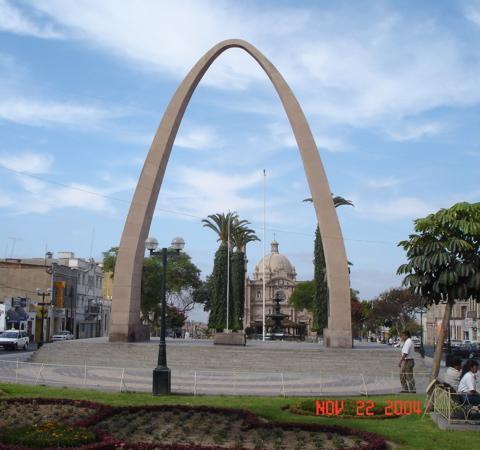Tacna, Tacna, Peru
Suggest Place to Visit
1412
Track to location with GPS |
 |
Precolumbian era
At the beginning, the area was populated by camanchacos, cabbages, lupacas, hammocks, uros. The Aymara colonization occurred around 800 and later the Inca Túpac Yupanqui would travel this region integrating it into the Inca Empire.
In 1572 the first Hispanic settlements began in the Caplina river valley, on the territory currently occupied by the city.
Colonial period
The first conqueror of these lands was Diego de Almagro who returned defeated from his journey to the Kingdom of Chile. Diego de Almagro was accompanied back to Cuzco by two evangelizers named Fray Antonio Rendon Sarmiento and Fray Francisco Ruiz Castellano, who on their way baptized the towns with the first mass, giving them the name of the date's saints, thus: Pica was Saint's Day. Andrés, to Tarapacá on the day of San Lorenzo, Arica on the day of San Marcos, Azapa on the day of San Miguel, Tacna on the day of San Pedro, Tarata on the day of San Benito. The second conqueror was Pedro de Valdivia who organized camps in Arequipa, Tacna and Tarapacá before starting his journey to the south of the continent.
In 1565 the viceroy Lope García de Castro created the San Marcos de Arica Corregimiento and of which the town of San Pedro de Takana was a part, the main authority being the lieutenant magistrate.
It was Pedro Pizarro who put down the rebellion of Manco II in 1536 in the regions of Chucuito, Moquegua, Tacna and Taparacá. Later, Pedro Pizarro himself would be given the orders from Tacna and Arica, while the order from Tarapacá to Lucas Martínez Vegazo. On the other hand, in 1573 we must mention that Viceroy Toledo commissioned Juan Maldonado de Buendía to establish a Reduction of Indians in the town of Takana.
In 1607 it is known that the lieutenant magistrate is Don Juan de Frías. Between 1607 and 1612, the town of the Caplina valley was called San Pedro de Takana or Tacana, being the main chief of town Pedro Quea. The conquerors modified the original name of Takana by Tacna. Tacna was a hamlet of natives and mitimaes.
Pope Paul V, at the request of the King of Spain, by means of the bull of July 20, 1609, authorized the creation of the bishopric of Arequipa, segregating it from the bishopric of Cuzco.
Viceroy Juan de Mendoza y Luna, Marquis of Montesclaros, by order of October 17, 1613 and commissioned by Pope Paul V and King Felipe III, made the ecclesiastical and political division of Arequipa. There it is established that the demarcation of the new diocese, made up of 7 townships: Arequipa, Collaguas, Condesuyos, Camaná, Vitor, Ubinas and Valle de Moquegua and Arica with the province of Tarapacá. Within the township of San Marcos de Arica, the parish of San Pedro de Tacna was included, in charge of a priest and other parishes such as Tarata, Sama, Ilabaya, Putina and Locumba.
The order of the viceroy Juan de Mendoza y Luna, dated October 17, 1613, establishes the creation of San Pedro de Tacna as a parish, intervened in the execution of the mandate of the viceroy, the Dean of the church of Arequipa, Don Pedro Ordaz de León. The first parish priest was Pedro Téllez, who had the first temple built. They continue as parish priests: Pedro Manrique, Luis Arias and Diego Armenta. The fifth parish priest, Melchor Méndez, had the temple dedicated to Saint Peter the Apostle built in 1679.
By 1777 the Arica township was made up of Ilo, Tacna, Arica, Iquique, Pica, Ilabaya, Tarata, Codpa.
Flag of Tacna raised by Admiral Guillermo Miller in 1821.
Plan of the city of Tacna in 1861 In November of 1780, the rebellion of Túpac Amaru II spread throughout southern Peru including the Andean region of Tacna, under the command of the native of Calacoto Juan Buitrón and his group of insurgents toured Tarata, Candarave, Codpa and Tarapacá.
In 1787, by royal decree of Carlos III, the corregimientos in the Viceroyalty of Peru were suppressed in order to avoid the abuses that the corregidores committed with the natives. The Arica township had lasted 222 years. The first corregidor was Francisco Rodríguez Almeida, and the last, Fernando Inclán y Valdez.
With the new political demarcation and on the basis of the bishoprics, the municipalities were created, which were subdivided into parties. Within the Municipality of Arequipa the party of Arica was considered, the first authority being the subdelegate. Tacna and neighboring towns were included in the Arica district, whose capital was the city of San Marcos de Arica.
Due to the incursions of pirates, tidal waves, and malarial fevers in the port of Arica, the Cajas Reales and the sub-delegate of Arica moved to the town of Tacna. The viceregal authorities preferred to travel on horseback, from Tacna to Arica, traveling by bridle path approximately ten leagues between the two places.
On June 20, 1811, Francisco Antonio de Zela took up arms against the Spanish administration and took the viceregal barracks of Tacna, calling himself Military Commander of the American Union, appointing the curaca Toribio Ara, head of the cavalry division. The rebellion was dismantled after knowing the defeat of the Argentines led by Castelli in the battle of Guaqui near Lake Titicaca, Zela being taken prisoner and exiled to Panama.
On July 4, 1813, they are elected to the electoral board made up of 17 people in the Parish house of Tacna. On Sunday, July 11, 1813, meeting in the house of the governor, Lieutenant Colonel Antonio de Rivero, the board elected the first council of Tacna and they were: Manuel Calderon de la Barca (first mayor), Nicolas Buteler (second mayor), Manuel Vicente Belaunde , Pedro Alejandrino Barrios, Cipriano de Castro, Alejo Bustios, Mariano Coronel Zegarra, Bonifacio Quelopana, Sebastian Romero (Councilors), Toribio Ara (Cacique and natural governor), José Barrios y Hurtado (First Trustee), Juan Flores (Second Trustee) .
On October 3, 1813, Juan Pallardelli from Tacna was Manuel Belgrano's emissary, coordinating the uprising of Enrique Pallardelli in Tacna and Enrique Peñaranda in Tarapacá. It would be in the battle of Camiara where the realist José Gabriel de Santiago would defeat the independentistas who fled to Upper Peru. Mayor Calderón de la Barca and José Gómez participate in the Pallardelli movement.
In 1814 the indepentist hosts of Mateo Pumacahua reached the vicinity of Tacna. The viceregal deputy Moscoso, retired to the port of Ilo.
In 1821 part of the independence army under the command of Guillermo Miller landed in Arica, organizing a military force made up of patriots from Moquegua, Tacna and Arica. On May 14, 1821 he entered Tacna where two royalist regiments joined them, calling themselves the force ´´The independents of Tacna´´.
On July 28, 1821, José de San Martín declared the independence of Peru.
The name of the city, Tacna, comes from the word Takana or Taccana (Taqana) that was modified at the beginning of the Colony, being called simply Tacna, by the action of the minimum effort to name it.
Vicente Dagnino indicates that Takana or Taccana comes from Quechua roots: taka: to hit, and na: place, which would mean: I hit in this place in relation to the conquest of the Quechua over this valley. Manuel A. Quiroga says it comes from the Aymara voices: ta start, ka divide and na seat; that is to say ´´Set or place of division or partition´´ of land for cultivation. Carlos Auza Arce, [1] indicates that Takana can mean: Mallet, hammer, mortar, pestle, stone, hard, dike, platform, being of common use in Quechua and Aymara.
Jorge Cáceres [2] indicates that the name could be a synonym for hillside or grandstand. The inhabitants of Collao call the soft streams that flow into Lake Titicaca Taccana, so this word could come from Aymara. Rómulo Cúneo Vidal indicates that it means ´´place cultivated in gentle graderies´´. The Aymara peasants of the province of Tarata indicate that the word Taccana means: ´´Ladera or land located on a hillside with platforms and bleachers´´; thus, in the Chucatamani valley there is a place with these characteristics and it is called Taccana. They resemble those that exist in the headwaters of the Tacna valley.
This city has interesting attractions, among which are:
The Cathedral of Tacna, which is located in front of the Plaza de Armas, has a neo-Renaissance style and very fine architectural lines, built by Eiffel.
The Historical Museum. Apurímac Street 202.
The Ornamental Pile of Tacna, according to the chronicler David Rendón dates from 1868 since in other publications they refer to 1869, but in 1868 he refers that in the documents of the Regional Archive of Tacna (Construction of the Uchuzuma River), it appears within the reconstruction works after of the earthquake of the same year, it also clarifies that it was designed by the French sculptor Mathurin Moreau together with the Architect Paul Lienard, cast in the workshops of the famous Osne valley foundry of the company Du Vall D´Osne of Greek neoclassical style, in the research published in ´´The Ornamental Pile of Tacna, Neptune Fountain´´ inspired by the beautiful fountain in the Plaza de Trevi in France, [9] represents the army of the god of the Sea heading to the Panateas or wars of the gods, accompanied from an army of tritons and by the eight gods of the winds named by Victor Hugo, he acquired it for £ 1,740, in England. It was landed in Arica in 1868, in storage it deteriorated due to the Arica Earthquake of 1868. It was repaired in the Tacna-Arica railway station. In front of the church in ruins, it was installed by the Peruvian architect Salazar and the Frenchman Matías Richet in 1868. It was inaugurated in its current location on July 28, 1885. There are several legends about what the sculptures represent. The historian Luis Cavagnaro Orellana indicates that there are four marine deities: Neptune, Adonis, Amphitite and Galatea. [10]
The Jorge Basadre House, where this Peruvian historian was born and lived part of his life.
The Casa Jurídica, Calle Zela 716, which houses the Museum of Reincorporation and the Pinacoteca de Tacna
The House of Francisco Antonio de Zela, Calle Zela 542, which in 1961 was declared a historical monument.
The Municipal Theater with Baroque-style canvases on the ceiling and portraits of famous people.
The Railway Museum, Av. Coronel Albarracín 402, at the beginning of the FFCC Tacna-Arica station. It shows different machines used to link these two cities, as well as photographs from the early 20th century.
The Locomotive Park, which has exhibited since 1977 the Locomotive Nº3 that moved the Peruvian troops for the defense of Arica from Tacna, during the War of the Pacific.
The Parabolic Arch, located in the Plaza de Armas, built in honor of the heroes of the War of the Pacific. (Miguel Grau and Francisco Bolognesi)
The Alameda Bolognesi.
The Ite wetlands being the largest in Peru of its kind and second in South America. Important reserve refuge for wild aquatic birds, both resident and migratory, who seek rest and food in the place.
Comments
We don´t have yet any comments about:
Tacna, Heroic City
Tacna, Heroic City
Be the first to leave a comment as it is very important to inform other people
Outros locais a visitar
Within a radius of 20 km from:Tacna, Heroic City
Zela's House |
| 0,5 Km |
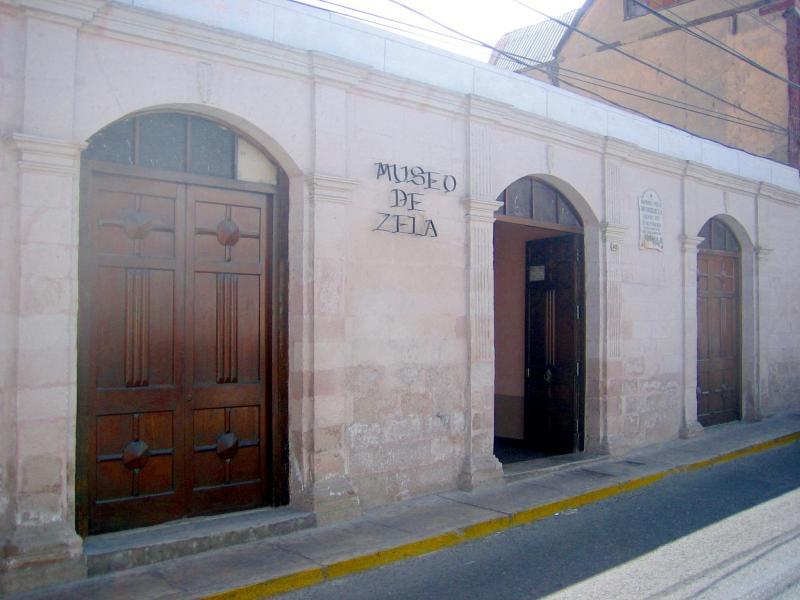 |
Ornamental pile Plaza de Armas |
| 0,9 Km |
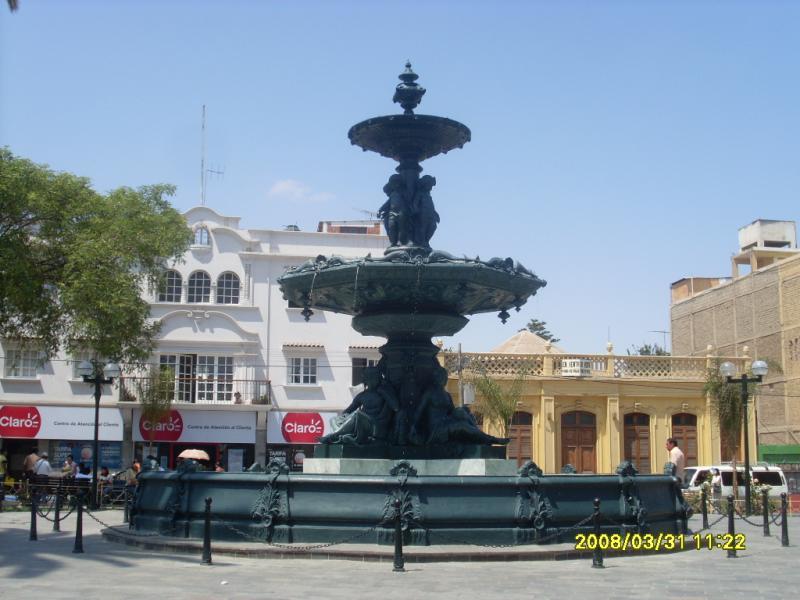 |
Tacna Cathedral |
| 0,9 Km |
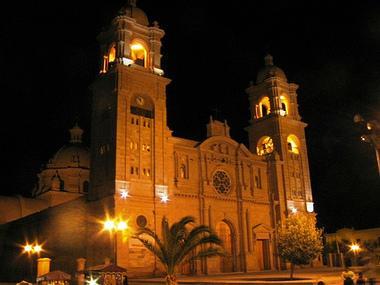 |
Parabolic Arch Tacna |
| 0,9 Km |
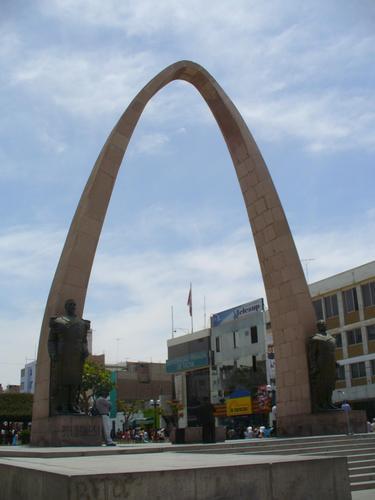 |
Monumento y Museo del Sitio de Alto de la Alianza |
| 1,0 Km |
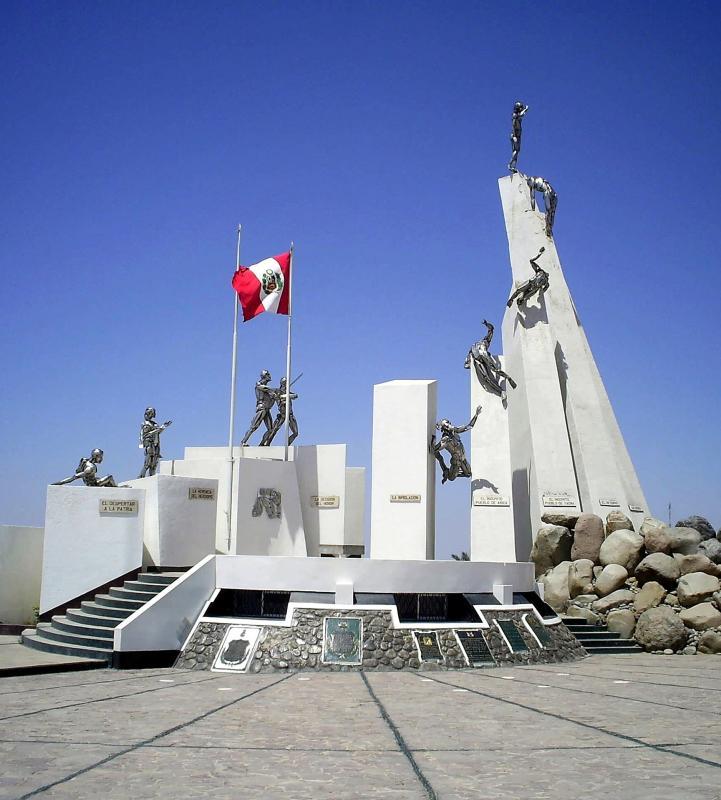 |
Alameda Bolognesi |
| 1,5 Km |
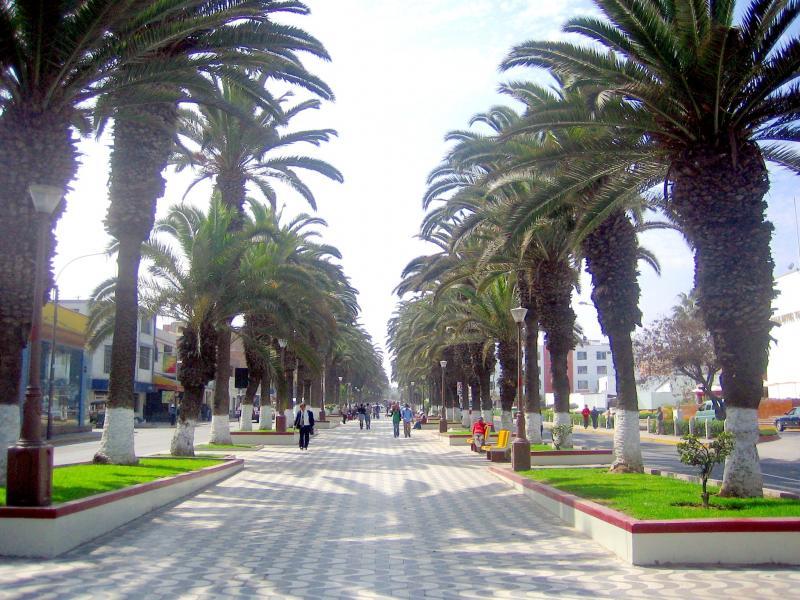 |
Old Valley of Tacna |
| 11,2 Km |
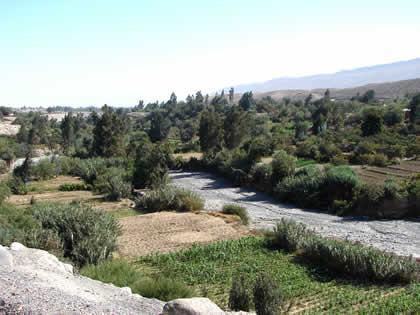 |
The Petroglyphs of Micula |
| 17,5 Km |
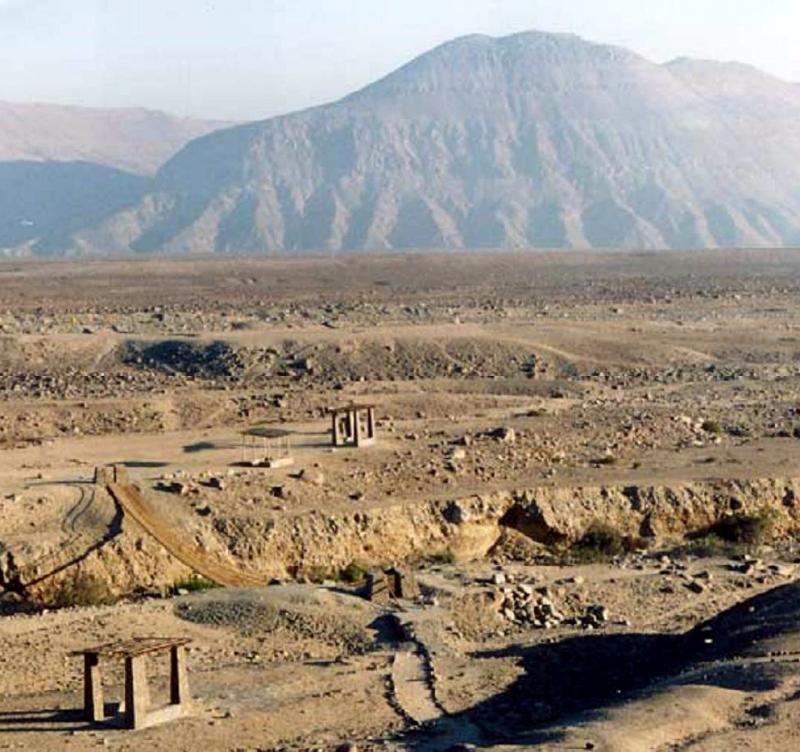 |
Hotel reservation near Tacna, Heroic City within a radius of 20 km
Why to book with BOOK HOTEL MADEIRA
The best prices
Our partnerships with the world´s largest operators offer research on the best market prices.
More options
At Rotas Turisticos you can book the hotel, buy the air ticket, book the transfer from the airport to the hotel and vice versa, book the local excursions, rent the car, take travel insurance and consult the places to visit and where to go.
Holiday Tips & Destinations
Hundreds of holiday destinations with all the options that allow you to easily choose the destination that best suits your dream vacation.
BOOK HOTEL MADEIRA
Links


